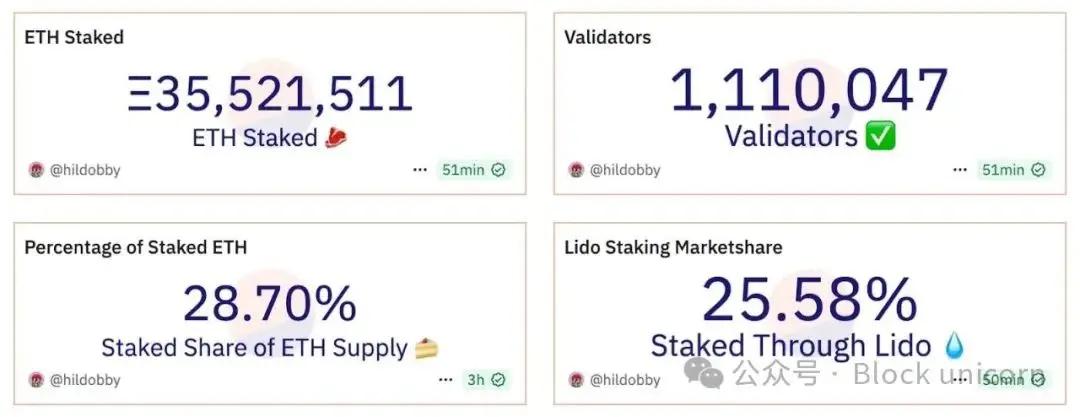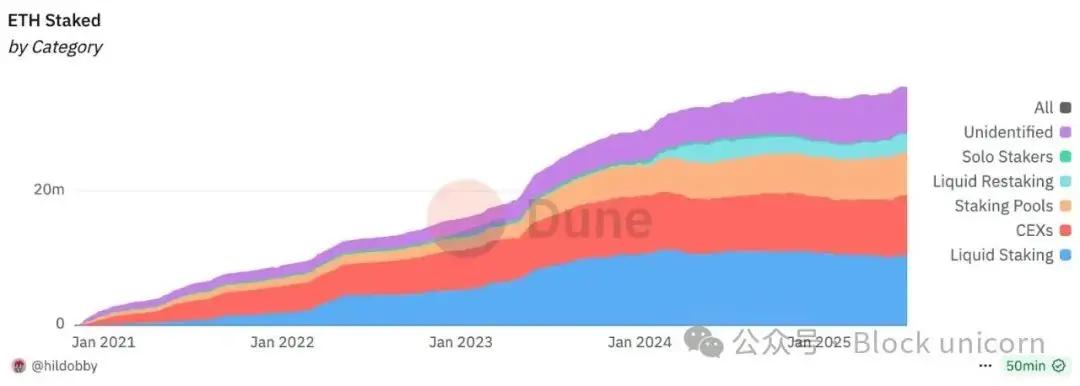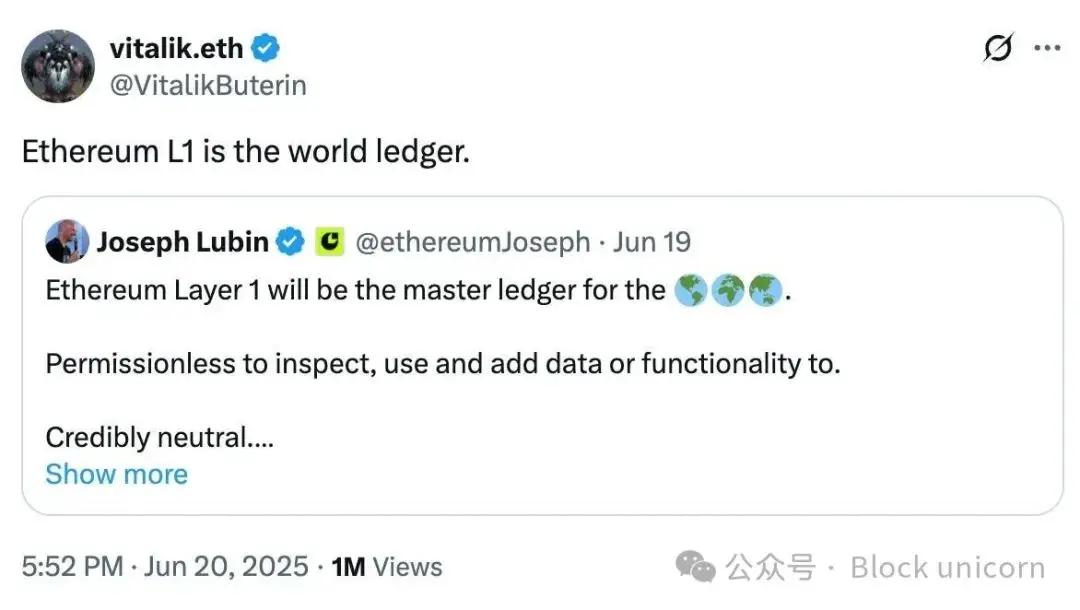Author: Thejaswini M A
Compiled by: Block unicorn
Preface
In 1688, captains would gather at Edward Lloyd's coffee house in London, seeking individuals willing to insure their voyages. Wealthy merchants would sign under the ship's details, becoming "underwriters", guaranteeing these high-risk voyages with their personal wealth.
The better the underwriter's reputation, the safer it was for everyone. The more secure the system, the more business it attracted. It was simple: provide funds, reduce everyone's risk, and then collect a share of the profits.
Reading the new guidelines from the SEC, it's clear that cryptocurrencies are simply digitizing the mechanism invented by coffee house underwriters - people earn returns by putting assets at risk, thereby making the entire system safer and more trustworthy.
Staking. Yes, it's back on the agenda.
On May 29, 2025, everything changed. On this day, the US government clearly stated that staking would not get you into legal trouble. First, let's review why this is so important now.
In staking, you can lock up your tokens to help secure the network and earn steady rewards.
Validators use their staked tokens to validate transactions, propose new blocks, and maintain the smooth operation of the blockchain. In return, the network pays them with newly minted tokens and transaction fees.
Without stakers, proof-of-stake networks like Ethereum would collapse.
Of course, you could stake your tokens, but no one knew if the SEC would one day come knocking, claiming you were conducting an unregistered securities offering. This regulatory uncertainty kept many institutions on the sidelines, watching retail stakers earn 3-8% annual yields with envy.
The Great Staking Boom
On July 3rd, Rex-Osprey Solana + Staking ETF went live, becoming the first US fund to offer direct crypto investment with staking rewards. It holds SOL through a Cayman Islands subsidiary and uses at least half of its holdings for staking.
"America's first staking crypto ETF," Rex Shares announced.
And they are not alone.
Robinhood just launched crypto staking services for US customers, initially supporting Ethereum and Solana. Kraken added Bitcoin staking through the Babylon protocol, allowing users to earn BTC yields while maintaining the native chain.
VeChain launched a $15 million StarGate staking program. Even Bit Digital abandoned its entire Bitcoin mining business, focusing on Ethereum staking.
What has changed now?
Two Regulatory Domino Tiles
First, the SEC's staking guidance released in May 2025.
It stated that if you stake your own cryptocurrency to help run a blockchain, it's completely fine and not considered a high-risk investment or security.
This covers solo staking, delegating your tokens to others, or staking through a trusted exchange, as long as your staking directly helps the network. This will remove most staking activities from the "investment contract" definition under the Howey Test. This means you no longer need to worry about accidentally violating complex investment laws simply by staking and earning rewards.
The only red flag is someone promising guaranteed profits, especially when mixing staking with lending,
or issuing fancy terms like DeFi bundled products, guaranteed returns, or yield farming.
Second is the CLARITY Act.
This is a law proposed in Congress aimed at clarifying which government agency is responsible for different digital assets. It is specifically designed to protect those who only run nodes, stake, or use self-custodial wallets from being treated like Wall Street brokers.
It introduces the concept of "investment contract assets", a new digital commodity category, and establishes standards to determine when digital assets are securities (regulated by SEC) or commodities (regulated by CFTC). The act sets procedures for determining when blockchain projects or tokens have "matured" and can be transferred from SEC to CFTC regulation, and sets time limits for SEC review to prevent indefinite delays.
So, what does this mean for you?
Due to the SEC's guidance, you can now stake your cryptocurrency in the US with more confidence. If the CLARITY Act passes, all those wanting to stake or participate in cryptocurrencies will have a more convenient and safer experience.
Staking rewards are still taxed as ordinary income when you gain "dominion and control", and if you sell the rewards later for a profit, you'll owe capital gains tax. All staking income, regardless of amount, must be reported to the IRS.
Who's in Focus? Ethereum
No, still around $2,500.

Lackluster price performance, but Ethereum's staking metrics show changes. The amount of ETH staked just hit a historic high, exceeding 35 million tokens, almost 30% of total circulating supply. Although these infrastructure developments have been ongoing for months, they suddenly become particularly important.


What's Happening in Corporate Boardrooms?
BitMine Immersion Technologies just raised $250 million to buy and stake Ethereum (ETH), with the company chaired by Tom Lee from Fundstrat. Their strategy is to bet that staking rewards plus potential price appreciation will outperform traditional Treasury assets.
SharpLink Gaming further deepened this strategy, expanding its ETH reserves to 198,167 tokens and staking its entire holdings. In just one week in June, they earned 102 ETH in staking rewards. Just by locking tokens, they get "free money".
Meanwhile, Ethereum ETF issuers are lining up for staking approval. Bloomberg analysts predict a 95% probability of staking ETF regulatory approval in the coming months. BlackRock's digital assets head called staking a "huge advancement" for the Ethereum ETF, and he might be right.
If approved, these staking ETFs could reverse the capital outflow that has plagued Ethereum funds since their launch. Why settle for price exposure when you can get both price exposure and yield?

Cryptocurrency Speaks the Language of Wall Street
For years, traditional finance has struggled to understand the value proposition of cryptocurrency. Digital gold? Perhaps. Programmable currency? Sounds complicated. Decentralized applications? What's wrong with centralized applications?
But what about yield? Wall Street understands yield. Admittedly, bond yields have rebounded from near-zero lows in 2020, with one-year U.S. Treasury yields rising to around 4%. But a regulated cryptocurrency fund that can generate 3-5% annualstaking rewards, while also offering potential upside of the underlying asset, is truly tempting.
Legality is crucial. When pension funds can buy Ethereum exposure through regulated ETFs and earn rewards by protecting the network, that's a big deal.
Network effects are beginning to emerge. As more institutions participate in staking, the network becomes more secure. As the network becomes more secure, it attracts more users and developers. As adoption increases, transaction fees also rise, thereby enhancing staking rewards. This is a virtuous cycle that benefits all participants.
You don't need to understand blockchain technology or believe in decentralization to appreciate an asset that rewards you for holding it. You don't need to believe in Austrian economics or distrust central banks to appreciate an asset as productive capital. You just need to understand that networks need security, and those providing security deserve to be rewarded.
Recommended Reading:
The Beautiful Big Bill Passes Narrowly: A Look at the Power Struggle Behind 869 Pages of Text
OpenAI "Fact-Checks" Robinhood: Unveiling Four Controversies Behind Stock Tokenization







